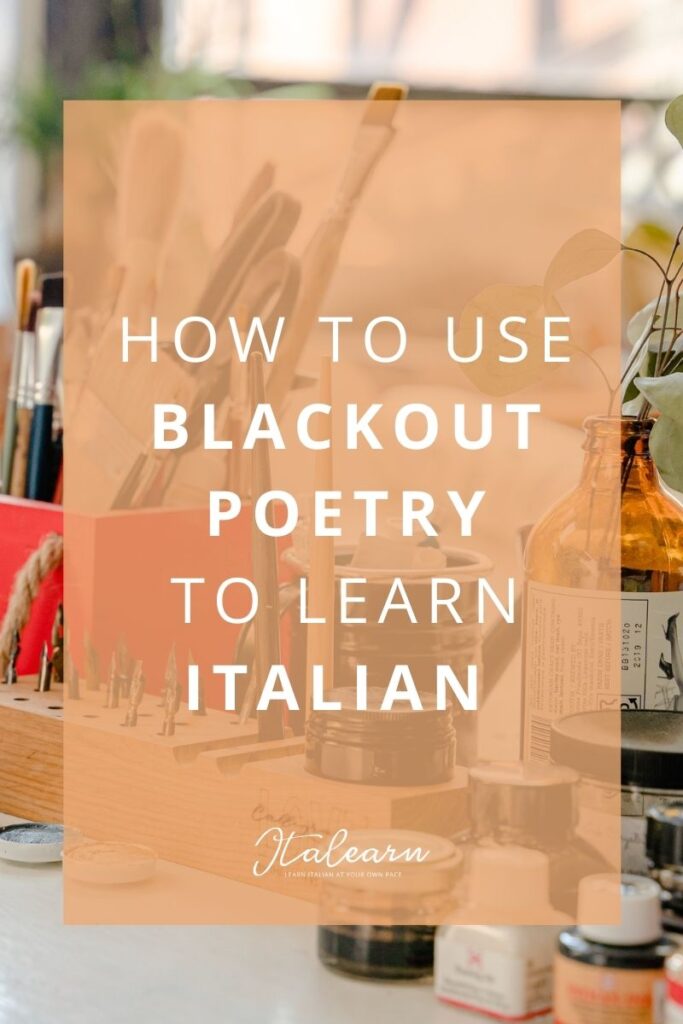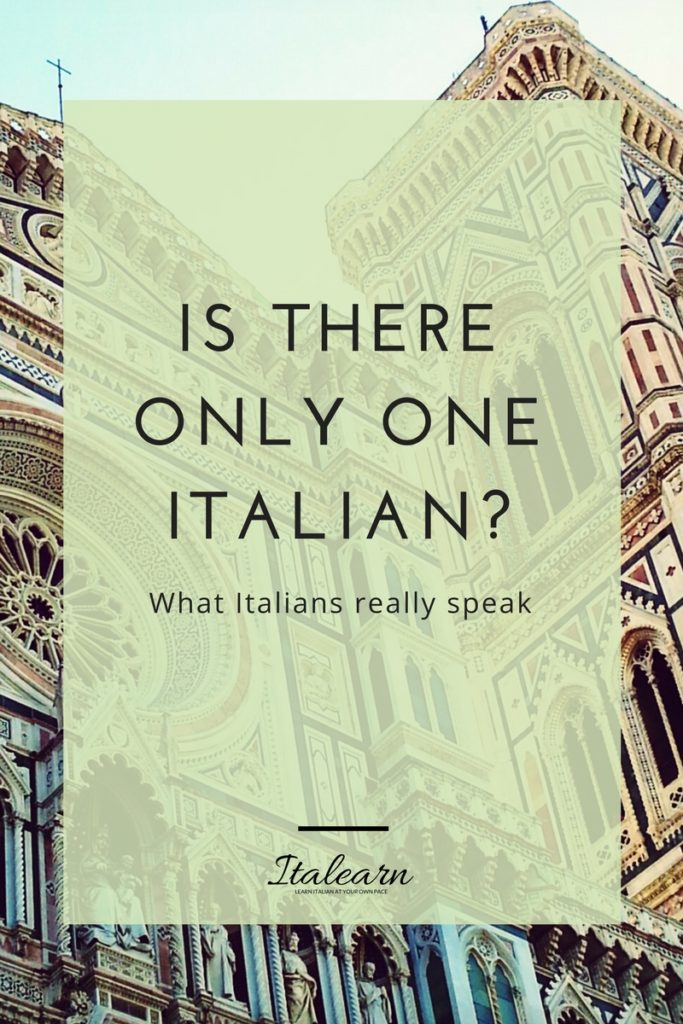When I first learned about this technique, I had no idea it could be used to teach Italian. It was just a creative exercise that I did to get inspiration for my writing. As you can tell, it worked very well every time, so I started to share my poems with my subscribers and Instagram followers, and that’s when I understood the potential that blackout poetry had.
I immediately introduced it into my teaching/learning activities and the results were great. Even my beginner students were able to write their own little poem in Italian, not to mention the more advanced.
If you type “blackout poetry” in your Pinterest search bar, you’ll be flooded with hundreds, if not thousands, of amazing poems: both in terms of words and art. Yes, because even though the name of this technique involves black, you can literally do anything with your text in terms of decorations. Of course, you can choose to remain minimal and literal, as Austin Kleon does — and I do too sometimes. There is no right or wrong when it comes to creativity. Not even when language is included, we’ll see why and how in the last part of this post.
Prep and tools
A brief introduction: blackout poetry is a form of creative writing where you find your words in someone else’s words. You save your poem and delete the rest, usually by blacking it out with a black marker. Blackout poems are often called “found poems” because it’s exactly what you do: you find your poem in a text written by someone else.
I have a few videos on Instagram where I demonstrate my method for blackout poetry in Italian, click here and here to see me in action.
Since we’re aiming at creating a short poem, we want to make sure that the text we use for this activity is filled with interesting and useful words. For this reason, I would suggest using literature, art/culture articles from magazines or newspapers, some blogs also offer very beautiful-word-dense posts.
With practice, you’ll be able to also use more technical pieces, like scientific publications, which I find absolutely challenging and I will attempt for sure.
The text you choose should be at least a few hundreds words, a book page for example. It doesn’t have to be too short or your poem will be too similar to the initial piece, aka not yours enough, and it doesn’t have to be too long because you don’t want to get completely lost in it.
The rest of your equipment is also very easy to put together:
- Pencil and eraser
- Black marker
- Optional: colored markers and/or paint
As I said in the introduction, blackout poetry is beautiful for its clean, elegant look: the words stand out because the rest of the page is black. This is a style that I personally like, I use it often and it’s 100% easy and fast to achieve.
However, if you are the artistic type, or you just don’t like black&white, you can draw on your page. Here are some examples of my experiments with color: like this one, or this one. And here you can see some of the pros!
How to find our words in Italian
As with all creative writing techniques, there is no right or wrong approach to blackout poetry. I am going to show you a couple of examples, but feel free to change the rules and to research other writers’ techniques.
The first step is… not to read the original text! Just scan through it and identify your first word or short phrase.
I usually try to find my initial word in the top part of the page, just so I have more text to check out. It doesn’t always work like this, though. Sometimes my message is hidden in the lower part of the text, but if it wants to surface, it will anyway. Even if there are fewer word options.
Once you know where you want to start, circle your word with your pencil and continue looking for the rest of your poem. One possibility at this stage is to write your words on a separate piece of paper so that you can see your poem/quote without distractions.
Go through the text as many times as are necessary for you. I have noticed that it often takes me from ten to twenty minutes to find my words. Of course, there is no fixed time, it depends on the text and on you, on how you feel at that very moment.
Sometimes it will not be possible for you to find a perfectly written poem, and that’s perfectly ok. The main goal of this exercise is not to study grammar and produce a correct text grammar-wise. What you want to pursue here is your search for your words, for your meanings. It doesn’t matter if the final text will not be understood by others, because it has to be meaningful for you.
Having said this, you may still want to look for a structure. In this case, just keep in mind the general rules of Italian: try to find gender and number matching nouns, adjectives, and verbs; check the agreement of tenses, if possible try to stick with one tense.
There is also the “list” option: if you are not able to structure a sentence, look for lists of words that have something in common. You decide why and how to group them together.
I have recently done exactly this, because I felt that I had no other options. I realized that in my text there was a sort of “climax”, an escalation of feelings from extremely positive and pleasant, to extremely negative and brutal. That was my sign: I just selected the words that allowed me to feel the passing of emotions.
How is this experience helping you to learn Italian
You have written a poem.
No one will ever read it? That’s fine.
It doesn’t even rhyme? That’s fine.
I can’t call it a poem. Well, why?
This text that you have written may not be a masterpiece, but it’s filled with your emotions, your experiences, your meanings: all in Italian. Maybe this was escaping you, the fact that you have written an artistic text in Italian. Because this is the whole point of this exercise: practicing your connection with Italian.
Being connected with the language is already a big result in itself, but there are also other ways (maybe more tangible) to reap the benefits of learning Italian through creative exercises:
- Reflect on how the author expresses a point of view, how they describe an object or a person, how they convey their feelings.
- Analyze any special language that appears in the text: idioms, the position of words, exceptions, tone, slang, etc.
- Make a glossary with all the new words, especially if the text has specific jargon.
- And of course, read, read read! Read aloud and record yourself.
There is so much you can do with just one page from a book. Being creative means being able to find new solutions, to try the less traveled road, to be open to change.
Adding creative activities to your regular Italian practice will result in more awareness of both the language and you as a learner.
These are significant steps towards owning the language, and this doesn’t happen overnight. But you can start now.
PS: if you like to learn Italian and develop your creative skills at the same time but you need some guidance, check out my individual coaching programs here.



